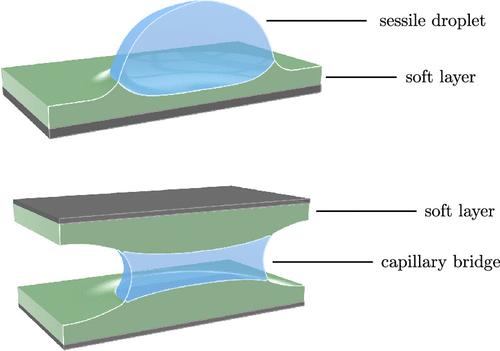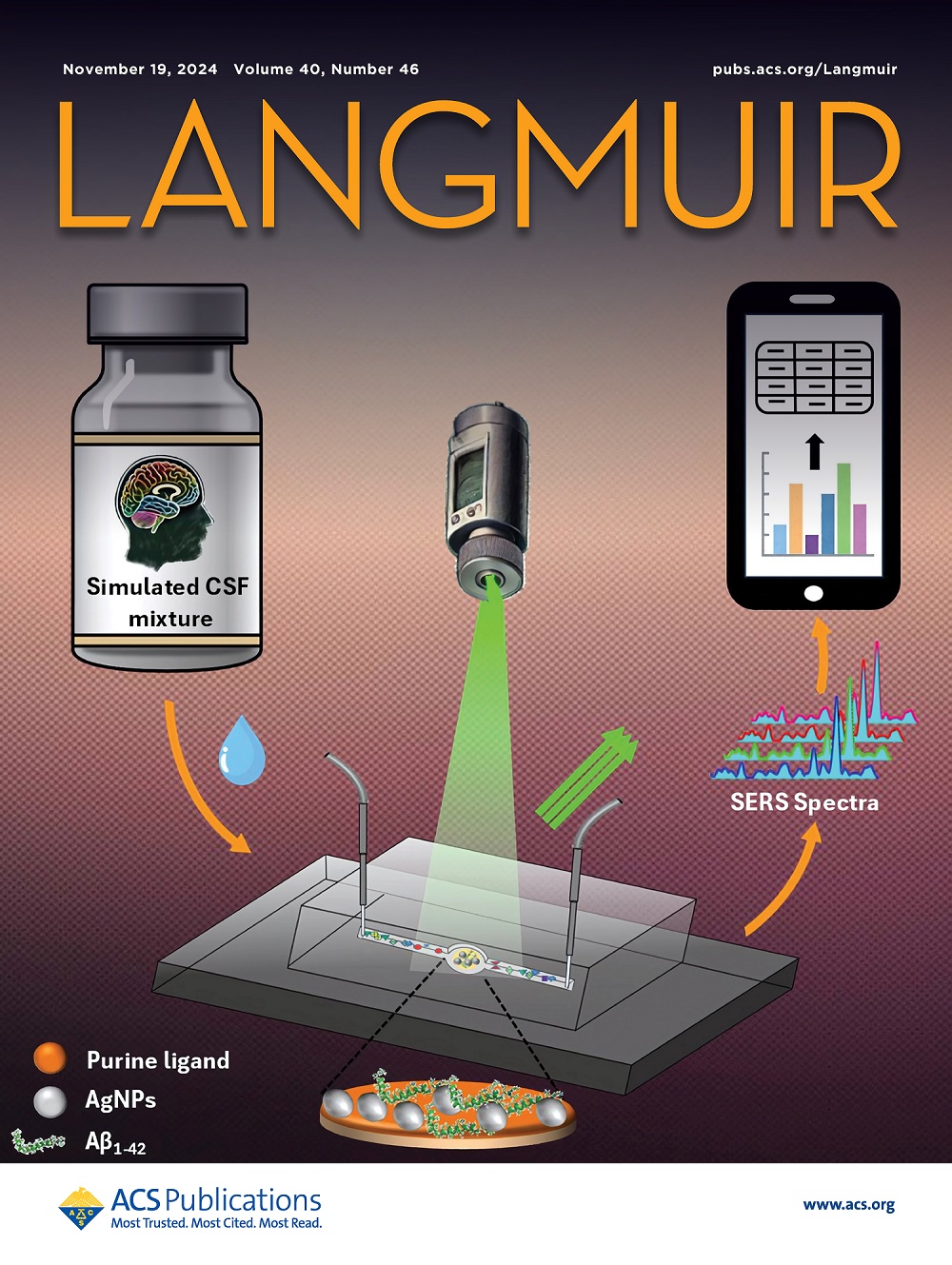Soft Wetting Ridge Rotation in Sessile Droplets and Capillary Bridges
IF 3.7
2区 化学
Q2 CHEMISTRY, MULTIDISCIPLINARY
引用次数: 0
Abstract
We investigate the deformation of soft solid layers in the presence of sessile droplets or capillary bridges. Unlike models that assume Young’s law governs the contact angle, we incorporate the surface tension balance at the contact line to analyze the rotation of the wetting ridge and the corresponding change in the contact angle. Our findings reveal that the rotation direction of the wetting ridge aligns with the sign of the Laplace pressure. Interestingly, although a softer solid layer typically decreases the contact angle for sessile droplets, a negative Laplace pressure in a hydrophilic capillary bridge pulls the solid–liquid interface, leading to an increased contact angle. A hydrophilic capillary bridge would be expected to move from thicker regions of a soft layer to thinner areas, exhibiting behavior opposite that of a sessile droplet. The interplay between soft layer deformation and contact angle modulation provides valuable insights into controlling droplet motion through elastocapillarity.

求助全文
约1分钟内获得全文
求助全文
来源期刊

Langmuir
化学-材料科学:综合
CiteScore
6.50
自引率
10.30%
发文量
1464
审稿时长
2.1 months
期刊介绍:
Langmuir is an interdisciplinary journal publishing articles in the following subject categories:
Colloids: surfactants and self-assembly, dispersions, emulsions, foams
Interfaces: adsorption, reactions, films, forces
Biological Interfaces: biocolloids, biomolecular and biomimetic materials
Materials: nano- and mesostructured materials, polymers, gels, liquid crystals
Electrochemistry: interfacial charge transfer, charge transport, electrocatalysis, electrokinetic phenomena, bioelectrochemistry
Devices and Applications: sensors, fluidics, patterning, catalysis, photonic crystals
However, when high-impact, original work is submitted that does not fit within the above categories, decisions to accept or decline such papers will be based on one criteria: What Would Irving Do?
Langmuir ranks #2 in citations out of 136 journals in the category of Physical Chemistry with 113,157 total citations. The journal received an Impact Factor of 4.384*.
This journal is also indexed in the categories of Materials Science (ranked #1) and Multidisciplinary Chemistry (ranked #5).
 求助内容:
求助内容: 应助结果提醒方式:
应助结果提醒方式:


